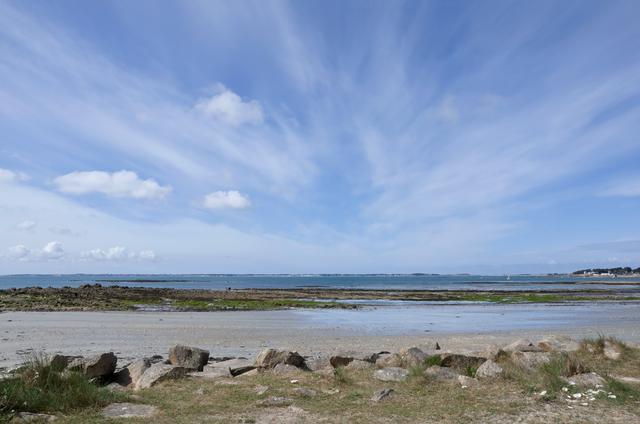
Since the end of World War II, Carnac has become a popular site for tourists seeking a break from the traditional destinations on the Côte d'Azur. During the months of July and August, the number of people in the town increases significantly from the influx of tourists and summer residents. The beaches of Brittany are rarely able to offer warm waters on par with those of their southern cousins; however local factors have ensured that Carnac continues to attract large numbers of visitors. Wind and waves in the region attract day and cruise sailors. The Standing Stones and other monuments in the vicinity provide some cultural attraction and Carnac-Plage's variety of bars and clubs ensures that a younger set can amuse themselves at night.
There are a number of camping grounds in the woods around Carnac, some clustered around various lakes such as the Étang du moulin du lac which is immediately to the west of the river Crac'h. There are also other campsites near to Carnac including Camping le Moulin de Kermaux, Des Menhirs and La Grande Metairie.
Carnac is home to "École de Voile de Carnac" which provides sailing and windsurfing lessons and rentals to sailors of all levels of experience. The geography of the Bay of Quiberon provides ideal conditions for sailing. The Peninsula of Quiberon provides protection from Atlantic waves and turbulence while allowing the Gulf Winds to enter the bay.
For windsurfers, the Saint-Colomban beach is located in Carnac-Plage. The beach is very popular with windsurfers, as its position allows for the best exploitation of strong winds from the West. Other beaches in the area provide equal access to the winds of the bay but windsurfers may find themselves frustrated the areas of dead air close to their shores.
Other beaches in Carnac include Bihan Plage, Légenèse Plage, Grande Plage, Beaumer Plage and Men-Du Plage.
A local myth holds that a unicorn lives in the waters off the city and in a cave near St. Malo.
